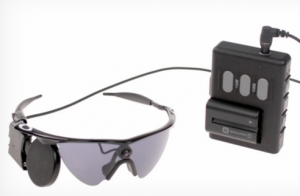After the BPA scare of a few years ago, consumers generally felt safe buying BPA-free plastic products. Well, I first reported on the risks of this last year, and now a new study warns of the dangers of these alternatives to BPA. The bottom line is that these new plastics pose similar risks as BPA (follow the link above, this one, and also this one for more information). My recommendation is the same – minimize your use of plastics in your food chain. Use stainless steel or glass where possible. Avoid aluminum water bottles too, as those are usually lined with plastic. Keep in mind that in the US at least, manufacturers aren’t required to demonstrate the safety of chemicals like these before they go on sale to the public.
New class of antibiotics discovered
There’s some good news in the fight against ever-evolving bacteria and the resistance they’re building to common antibiotics (the ‘post-antibiotic era‘ we’re entering). Researchers at the University of Notre Dame have discovered a new class of antibiotics (called oxadiazoles) that is proving effective against MRSA. Of course, who knows how long it’ll take for MRSA to adapt and develop resistance…but for now, it’s great news.
BPA directly linked to cancer (in mice)
 BPA is one of those chemicals that has caused a lot of fear in recent years…but also some uncertainty. More and more though, it sounds like nasty stuff that’s best avoided (if possible). A new study found a direct correlation between BPA consumption and the rate of cancer in mice (read more about the study here). We’re lagging behind the rest of the world on this issue (the FDA still allows it), and unfortunately, its replacement, BPS, is pretty much an unknown, it may or may not have issues of its own. So what can you do? The same thing you do if you want to eat healthy overall. Avoid prepared and processed foods. Buy fresh ingredients and cook your own meals. At least try to minimize your exposure to BPA. You can read more about BPA over at Wikipedia.
BPA is one of those chemicals that has caused a lot of fear in recent years…but also some uncertainty. More and more though, it sounds like nasty stuff that’s best avoided (if possible). A new study found a direct correlation between BPA consumption and the rate of cancer in mice (read more about the study here). We’re lagging behind the rest of the world on this issue (the FDA still allows it), and unfortunately, its replacement, BPS, is pretty much an unknown, it may or may not have issues of its own. So what can you do? The same thing you do if you want to eat healthy overall. Avoid prepared and processed foods. Buy fresh ingredients and cook your own meals. At least try to minimize your exposure to BPA. You can read more about BPA over at Wikipedia.
The truth about orange juice
 I don’t know why, but during these cold winter months, orange juice is on my mind a lot. Those thoughts lead back to the story of how the juice gets from orchard to your table…and I feel it’s high time I use this blog to spread the word.
I don’t know why, but during these cold winter months, orange juice is on my mind a lot. Those thoughts lead back to the story of how the juice gets from orchard to your table…and I feel it’s high time I use this blog to spread the word.
My concern is with ready-to-pour orange juice that you’ll find in about any store. Do you really think that’s fresh squeezed, yet available that way 365 days a year? Forget the labeling. It’s processed food like any other. The deal is, the oranges are harvested and squeezed, then stored in giant vats until it’s ready to be bottled and shipped. However, fresh squeezed orange juice goes bad quickly. So, the oxygen is pumped out of those tanks. Sadly, this also eliminates most of the flavor. Thus, when it’s time to bottle and ship the juice, chemicals are added to add flavor. Since these chemicals are derived from naturally occurring compounds in oranges, they aren’t considered artificial flavoring…so the labeling doesn’t draw attention to this fact.
If you want to avoid this artificial flavoring (“flavor packs”, it’s called), buy organic. There’s a great chart that shows which orange juices do and do not use these flavor packs, over at Toxinless (short summary: if you’re not buying organic juice, you’re not buying 100% natural, real juice).
How do you avoid this? Well I’m pretty sure that if you just buy frozen orange juice concentrate, it will have skipped this flavoring step. I’m just not 100% certain of that, it’s tough to verify as this isn’t exactly something the industry wants to talk about.
You can read more about this over at WikiPedia, or check out the book Squeezed for more. Follow this link for another good article on this subject.
Retina implants (bionic eye)
 The FDA has approved a retina implant, the Argus II, using a sheet of electrodes to partially restore vision. The restored vision is nowhere near perfect, it’s extremely basic, but does provide some level of pattern recognition (it only has 60 electrodes though, so you’re not going to be making out any detail). A camera on a pair of glasses captures the image which is them converted into signals transmitted to the retina implant. A more advanced design, the Alpha IMS (not yet FDA approved), allows users to make out mouth shapes (like smiles), large objects like cars or trees, thanks to its 1500 electrodes (vs. the Argus II’s 60). It also doesn’t require head-mounted glasses like the Argus II, but is still very much in the testing phase.
The FDA has approved a retina implant, the Argus II, using a sheet of electrodes to partially restore vision. The restored vision is nowhere near perfect, it’s extremely basic, but does provide some level of pattern recognition (it only has 60 electrodes though, so you’re not going to be making out any detail). A camera on a pair of glasses captures the image which is them converted into signals transmitted to the retina implant. A more advanced design, the Alpha IMS (not yet FDA approved), allows users to make out mouth shapes (like smiles), large objects like cars or trees, thanks to its 1500 electrodes (vs. the Argus II’s 60). It also doesn’t require head-mounted glasses like the Argus II, but is still very much in the testing phase.


